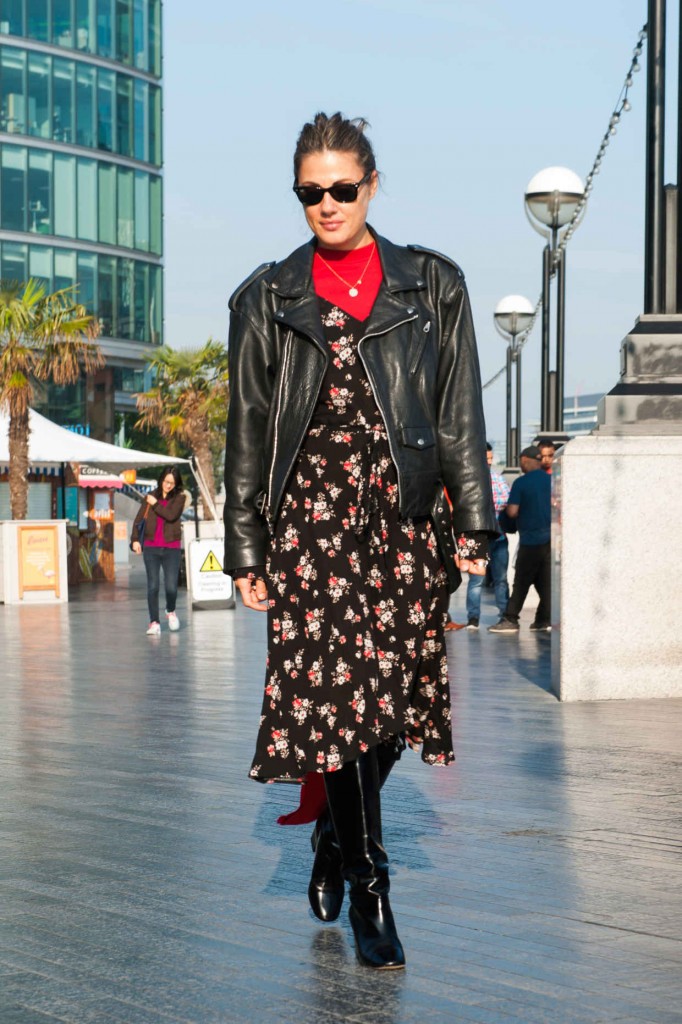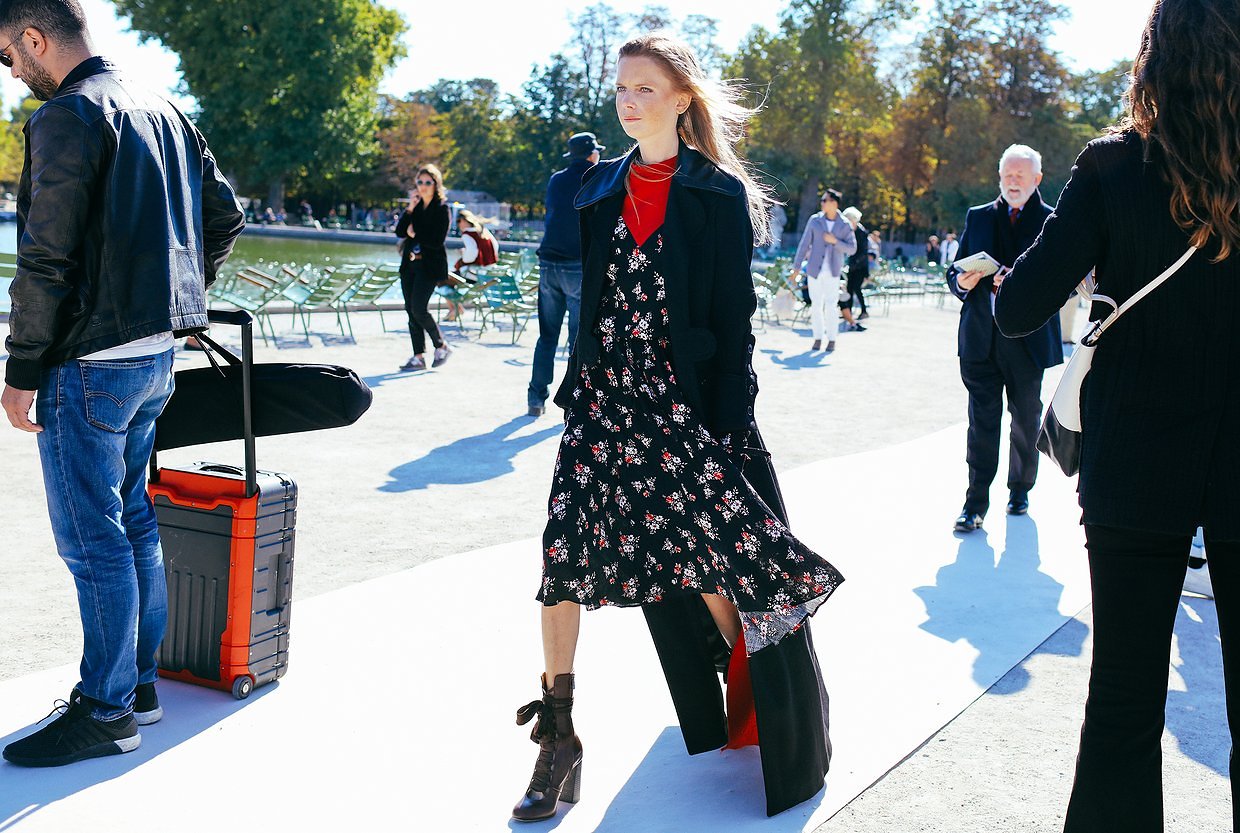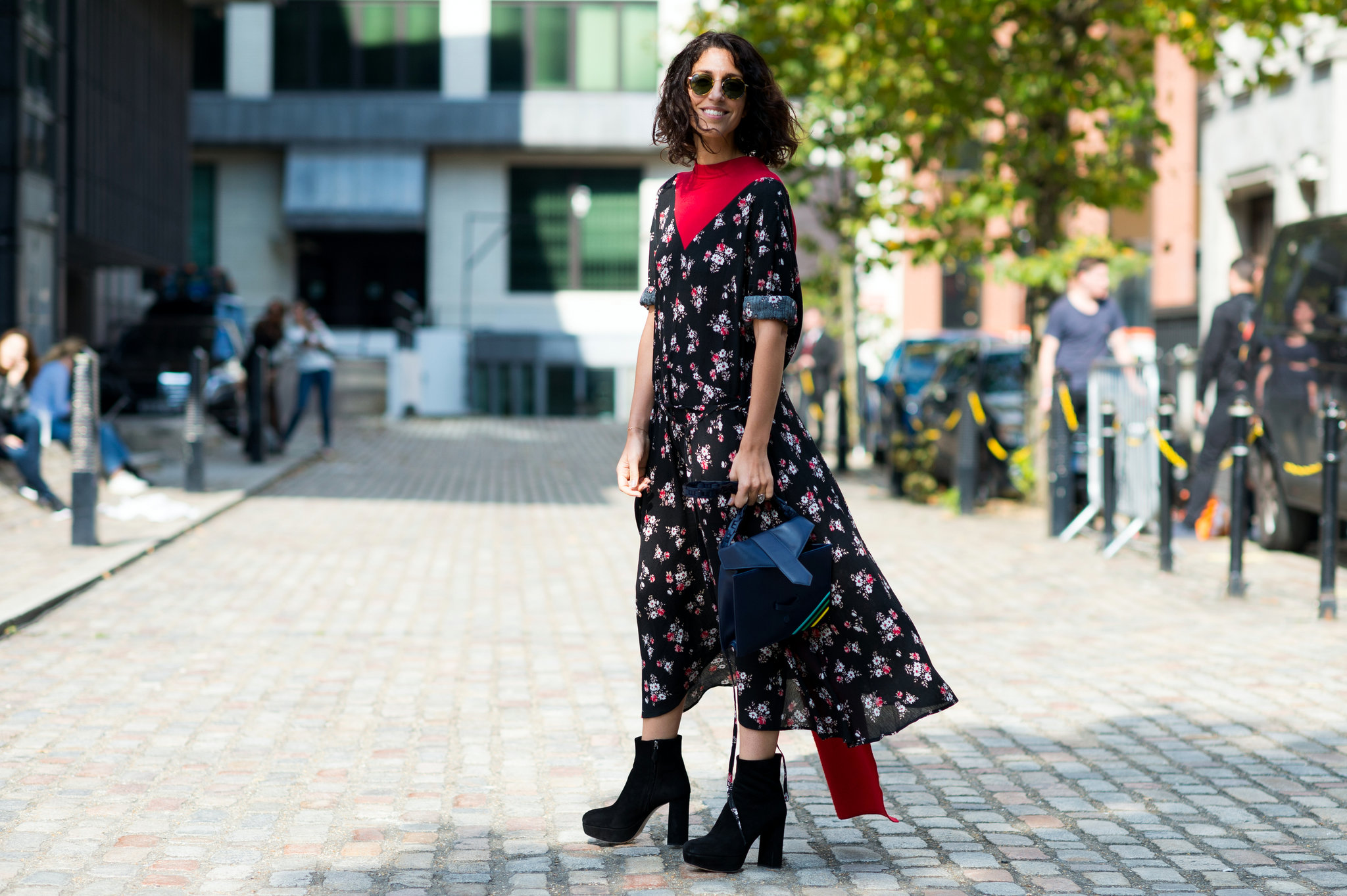VOGUE CLAIMS THAT THEY have ‘all the makings of an unforgettable fashion landmark,’ The Business of Fashion has praised their ‘radical democratic principles’ and proclaims that the revolution will be branded in their honour, W calls them ‘truly revolutionary’ and WWD recently dubbed their designer an ‘alternative fashion hero.’ Vetements is the latest brand tasked with saving a staid fashion climate, and fashion critics have been falling over themselves praising the company. In an industry that appears run aground and is rife with discontent due to visual overload and a seemingly stuffy and befuddled producer-to-consumer relationship, it is tempting to long for alternative fashion heroes. For Vetements, being at the right place at the right time has enabled the brand to lead the current zeitgeist, and the fashion week cycle that recently concluded in Paris saw the acclaim culminate in another celebrated and celebrity-studded Vetements show and the first collection by designer Demna Gvasalia at the much-venerated fashion house Balenciaga.

The story is an old and familiar one: young, upstart outsiders take on a sedate and conventional system and turn it on its head in the name of authenticity, edginess and cool. Popular culture thrives on this narrative, and in the fashion industry this storyline is a well-worn one. ‘Real’ fashion is thrust, from the street, upon the unsuspecting bourgeoisie, and the bourgeoisie go potty for it. In the case of Vetements, what editors and buyers are waxing lyrical about ranges from oversized hoodies, off-beat dresses and asymmetrical overcoats to elongated knits and jeans ripped and then patched together again. ‘This is what fashion looks like when you take the L train to Bushwick,’ according to Vogue.1 The write-up ‘Vetements: Whiffs From the Underground’ in The Business of Fashion, was equally quick to proclaim, ‘It belongs to the street.’2

Vetements is described as a ‘collective’ helmed by designer Demna Gvasalia and his brother Guram, and their purportedly democratic working methods are an important part of the brand’s appeal. Their ‘no-concept concept’ is another element of their allure: Sarah Mower tells us in her review of the brand’s most recent catwalk show that ‘rather than just being subversive for the sake of the gestural politics, Vetements means business.’3 Demna Gvasalia is also quick to point out that his collections are ‘not trying to push the boundaries of fashion,’4 and that ‘fashion shouldn’t make you dream.’5 This pragmatic approach chimes well with the times, and the Vetements phenomenon no doubt taps into a wider discourse around what we should expect from high fashion: should it be about concepts or about products? Should it sell or make us dream?
The popularity of Vetements, buoyed by hyperbolic articles in the fashion press and brand-affiliated social media accounts prolific in their gritty images of confederates of the ‘collective’ in various states of disarray, speaks to our attraction of kicking against the system. Fashion critics have made a lot of the brand’s ‘outsider status’ while at the same time being quick to point out that it has an illustrious pedigree: Demna Gvasalia has worked at both Louis Vuitton and Maison Margiela, and, according to one online retailer of the brand’s garments, other ‘collective members’ have previous ties to both Balenciaga and Céline.6 The fashion industry seldom takes issue with paradox or rhetoric – in fact most press texts and show reviews seem to revel in it. With the reporting of Vetements, this is particularly obvious – here the ubiquitous and ever anonymous behind-the-scenes staff, a staple of every fashion house, become ‘a collective’ and the insider is transformed into an outsider by virtue of ‘whiffs from the underground.’

Creating myths around a fashion brand is of course an important part of fashion marketing, and the fashion press is the most effective way of perpetuating this type of storytelling. In the case of Vetements, the projected grit on the catwalk makes the conservative and conventional amongst us feel a twinge of excitement: ‘Just when – by looking at mainstream corporate luxury-goods norms – it seemed that cool was dead and buried and nothing “alternative” could ever again survive, along came a couple of brothers, Demna and Guram Gvasalia, and their collective of friends, to prove skeptics wrong,’7 as one particularly enthusiastic reviewer would have it.
The semblance of rebellion that Vetements is offering us, comes at a high price: €875 for a stretch-knit jumper, €1025 for a pair of jeans or €9500 for a sequinned dress. Any further cost to the wearer is highly circumstantial – the only ones likely to be sporting this garb can afford to observe the grittiness that Vetements is becoming known for from a safe distance. The brand has been hailed for appealing to ‘a real audience – not just fashionistas,’8 but who this real audience might be is a moot point. Instead, it seems more likely that the reason Vetements currently has the fashion press in a tizz, is that this revolution is one that comes at minimum risk. It may include safari-style visits to gay sex clubs or dingy Chinese restaurants, but the youth culture it glorifies is one that is very happy to accommodate, and buy into, those mainstream corporate luxury-goods norms. The Vetements universe, as it is presented in the press, is one that proffers a romanticised view of lower-class life and of the proverbial ‘Other.’ It offers us a bit of rough and the rumble of the L train, while simultaneously fitting very snuggly into the fashion system as we know it. It’s curious actually, considering that Demna Gvasalia himself has been quick to point out in interviews that Vetements plays by the same rules as establishment brands,9 that those reporting on (and contributing to) Vetements’ ascent have been so insistent about their alternative status.

Linking rebellion and consumption has been a trend since the 1960s, but the band of insiders that make up Vetements are proudly apolitical: they ‘mean business.’ The disillusion that many feel with the contemporary fashion system is here being enlisted to keep the wheels of luxury consumption in motion. What might otherwise be described as sales strategy is here elevated to revolution, and the growing discontent with corporate fashion and ever-accelerating consumption is cleverly channeled straight back into the luxury fashion system. We are encouraged to covet the brand’s unconventional ugly-beautiful aesthetic in order to feel closer to their collective of social rebels and outsiders, presently coded as cool and desirable. This is not just a look, we are told – this is a way of life. Vetements has the appearance of rejecting mainstream fashion, but their brand of reconstituted seediness, readily consumable through fashion collections and the images published in the fashion press or posted on the social media accounts of the brand’s cohorts, is aimed at Western, educated, middle-class fashion insiders hungering for a product with some semblance of ‘authenticity,’ without any of the uncouthness that might cling to the underground.
The mystique created around Vetements in the press hovers near one of the most persistent critiques of the fashion industry: that codes of the ‘underground’ are co-opted by the mainstream and sold back at great expense to the fashion elite. The success of the brand is perhaps proof of the weariness many feel for conventional glamour and conglomerate-driven fashion, but the codes Vetements convey are sufficiently familiar for the brand to be slotted straight into the establishment and unthreatening to the degree that the designer has been offered a creative directorship at one of those very conglomerates. There appears to be a fair bit of doublethink going on in the fashion press; one of the major ironies of the reporting around Vetements is that the press is fully aware that the image the brand projects is constructed, yet it still buys into it.
The revolution will, indeed, be branded Vetements.
Anja Aronowsky Cronberg is Vestoj’s Editor-in-Chief and Founder.
N. Phelps, Vetements Fall 2015, March 5 2015, www.vogue.com/fashion-shows/fall-2015-ready-to-wear/vetements ↩
A. Flaccavento, Vetements: Whiffs From the Underground, October 2 2015, www.businessoffashion.com/articles/fashion-show-review/vetements-whiffs-from-the-underground ↩
S. Mower, ‘Vetements Fall 2016,’ Vogue, March 3 2016, www.vogue.com/fashion-shows/fall-2016-ready-to-wear/vetements ↩
M. Socha, ‘Demna Gvasalia – His Own Rules,’ WWD, November 18 2015, wwd.com/fashion-news/fashion-features/demna-gvasalia-balenciage-vetements-10279574/ ↩
A. Fury, ‘The label Vetements is the most radical thing to come out of Paris in over a decade. So what’s the big idea?’ The Independent, October 16 2015, www.independent.co.uk/life-style/fashion/features/the-label-vetements-is-the-most-radical-thing-to-come-out-of-paris-in-over-a-decade-so-whats-the-big-a6692211.html ↩
https://www.ssense.com/fr-fr/femmes/designers/vetements, accessed March 14 2015 ↩
S. Mower, ‘Vetements Fall 2016,’ Vogue, March 3 2016, www.vogue.com/fashion-shows/fall-2016-ready-to-wear/vetements ↩
A. Flaccavento, Vetements: Whiffs From the Underground, October 2 2015, www.businessoffashion.com/articles/fashion-show-review/vetements-whiffs-from-the-underground ↩
M. Socha, ‘Demna Gvasalia – His Own Rules,’ WWD, November 18 2015, wwd.com/fashion-news/fashion-features/demna-gvasalia-balenciage-vetements-10279574/ ↩